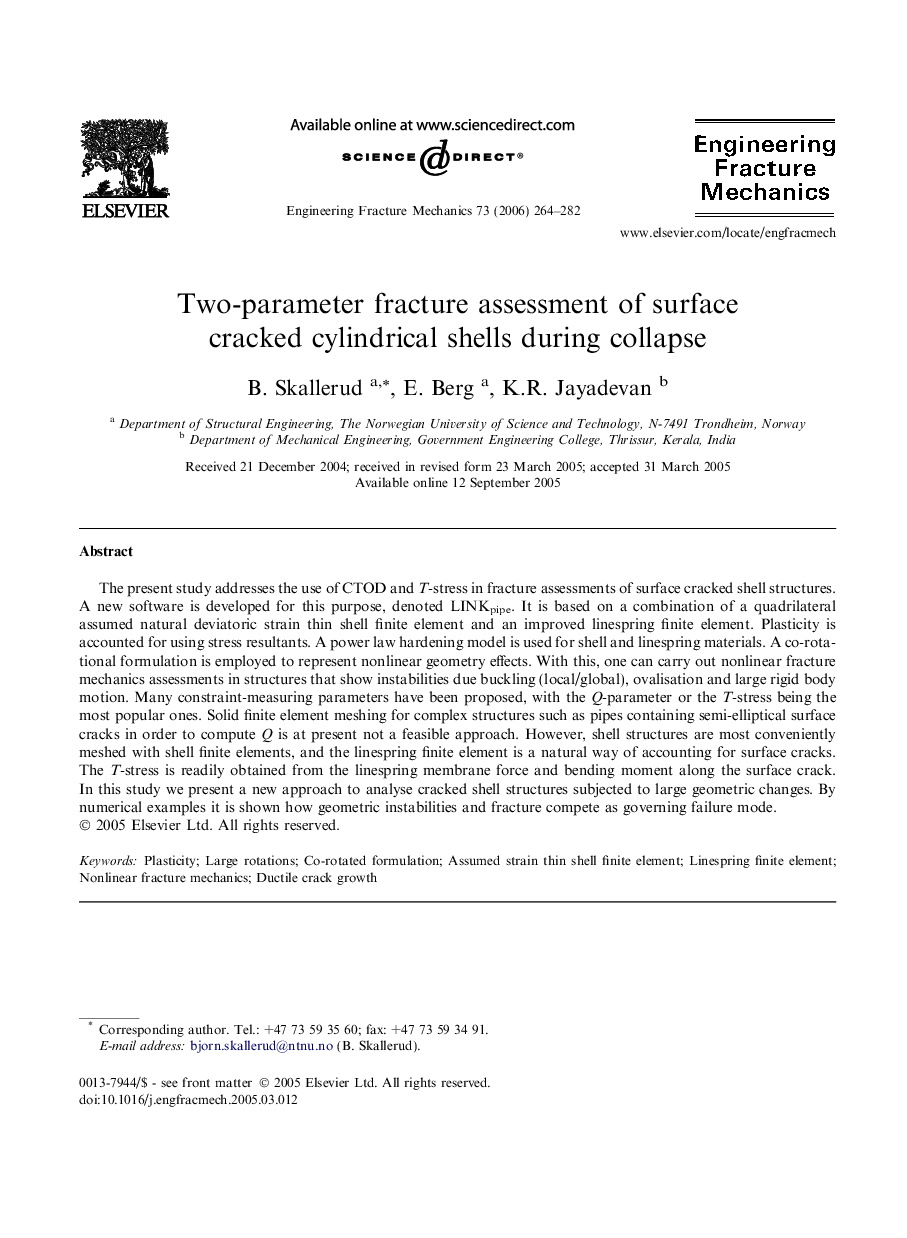| Article ID | Journal | Published Year | Pages | File Type |
|---|---|---|---|---|
| 771870 | Engineering Fracture Mechanics | 2006 | 19 Pages |
The present study addresses the use of CTOD and T-stress in fracture assessments of surface cracked shell structures. A new software is developed for this purpose, denoted LINKpipe. It is based on a combination of a quadrilateral assumed natural deviatoric strain thin shell finite element and an improved linespring finite element. Plasticity is accounted for using stress resultants. A power law hardening model is used for shell and linespring materials. A co-rotational formulation is employed to represent nonlinear geometry effects. With this, one can carry out nonlinear fracture mechanics assessments in structures that show instabilities due buckling (local/global), ovalisation and large rigid body motion. Many constraint-measuring parameters have been proposed, with the Q-parameter or the T-stress being the most popular ones. Solid finite element meshing for complex structures such as pipes containing semi-elliptical surface cracks in order to compute Q is at present not a feasible approach. However, shell structures are most conveniently meshed with shell finite elements, and the linespring finite element is a natural way of accounting for surface cracks. The T-stress is readily obtained from the linespring membrane force and bending moment along the surface crack. In this study we present a new approach to analyse cracked shell structures subjected to large geometric changes. By numerical examples it is shown how geometric instabilities and fracture compete as governing failure mode.
